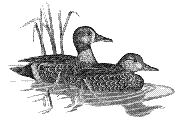United States Fish and Wildlife Service

Waterfowl Management Handbook
Date of this Version
January 1988
Abstract
By gaining greater understanding and appreciation of wetland environments, managers have developed creative insights for waterfowl conservation. Among the most exciting new developments in the understanding of functional wetlands has been the recognition of the important roles of invertebrates in aquatic ecosystems. These roles include trophic linkage from primary production to secondary consumers such as waterfowl, packaging of specific nutritional components such as amino acids and micronutrients for vertebrate predators, and detrital processing of wetland organic material. Although specific invertebrate responses to various management techniques are not always predictable and may differ among invertebrate species, patterns related to water regimes, water chemistry, and vegetative structure have emerged. Managers should consider the following invertebrate responses to natural and manipulated wetland complexes when managing for waterfowl.


Comments
Published in Diana H. Cross and Paul Vohs (eds.) Waterfowl Management Handbook. Fort Collins, CO: U.S. Fish and Wildlife Service, 1988. Online at http://www.nwrc.usgs.gov/wdb/pub/wmh/contents.html